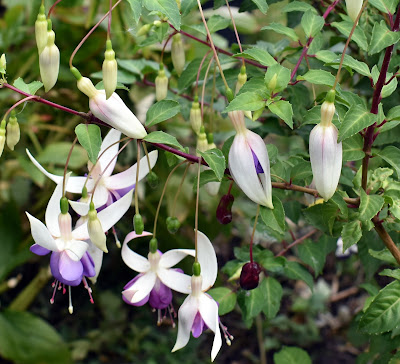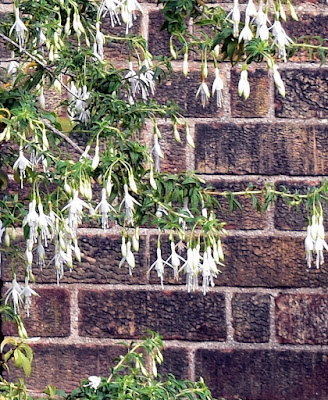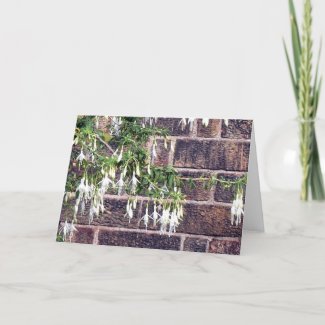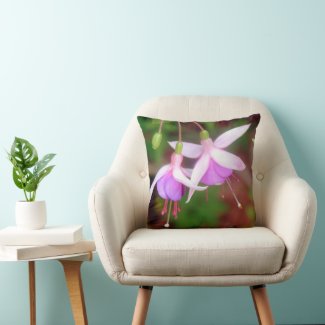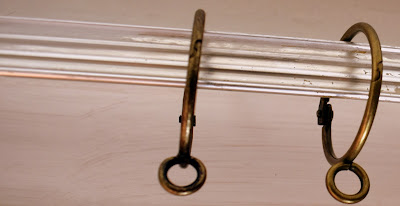I was wandering around the garden this morning taking stock of how the garden plants have come through this scorching summer with its drought and intense summer sun.
I noticed that most of the colour in the garden right now is coming from two mature hardy fuchsias, we have one white and one purple and white.
In fact, they stand out as doing extremely well, with healthy green leaves, no pest damage and a bounty of flowers and I have not watered them once all summer.
I am not sure that I have ever looked at them so fondly. Many other flowers have gone over so quickly this year suffering from extreme summer weather conditions, but these beauties are looking healthy and gorgeous!
One is planted in our front garden and which is west facing and the other is in our east-facing back garden. Both are on heavy clay soil, though the one at the back is on a slope and the one at the front is very close to the gravel drive and path so they both get better drainage.
In this article, the care of Fuchsia is related to the hardy Fuchsia planted in the ground. Tender Fuchsia and annual Fuchsia do require different care so do check what kind you own.
In addition to growing Fuchsia, I do enjoy taking photographs of them and making them into products so I have included a couple for you.
Position Of Hardy Fuchsia In The Garden
Fuchsias like to grow in sunshine or a little partial or dappled shade. However, a full south-facing position where there is hot sun all day would be too much for them.
They do like to be in a sheltered spot. If they are not you may find that the delicate flowers will be blown away by strong winds which would be a shame.
Personally, I have found east-west planting the best.
Soil Conditions, Feeding And Watering Hardy Fuchsia
The care of this lovely plant is relatively straightforward. Fuchsia does like well-drained soil and I did wonder if they would survive on our very heavy clay.
However, with one being on a slope where drainage is better and the other being close to a gravel drive they have thrived.
As long as drainage is good they can cope with most types of soil.
I don't feed my Fuchsias as our soil is very rich already but you can give a feed in Spring.
A mature plant in the ground should not need watering much and I never water ours. Even in this summer's drought and 40-degree Celcius heat conditions, I did not water them due to a hosepipe ban and they have not suffered.
This summer was an exception with the persistent heat and searing sun, so if there had not been a ban on using water, I would likely have watered them deeply about once a fortnight.
Propagating Hardy Fuchsia
Hardy Fuchsia can have hardwood cuttings taken in the autumn. All we need to do is to take a cutting of woody stem a few inches long. Avoid any new green shots for these cuttings.
Under a pair of leaves make a clean horizontal cut that is the base of the cutting. Across the top make a diagonal sloping cut at about 45 degrees, which is the top of the cutting. The sloping cut is so that any water will run off rather than sitting in the cutting and causing rot.
Then simply gently insert the cuttings into a gritty compost around the edge of a pot.
They do need to be in a place where it is frost free over the winter and cool. They should not be allowed to dry out completely or become waterlogged. A cool greenhouse is perfect. If like me you do not have one then place in a cold frame or even on a potting table in a sheltered spot with some protection from heavy rain would be fine. If it is very cold some fleece protection may be wise.
Once you see new shoots in the springtime we can then pot up each individual plant into its own pot. After that, in summer they can be planted in the garden or into a larger pot.
Always plant out in early summer whether it is a cutting or a newly bought plant. This gives them the best start in life. Any later than that makes them more susceptible to cold and they may not thrive. Plant a few inches deeper than the base and keep well watered for the first season.
Pruning Hardy Fuchsia
Little pruning is required most of the year as most of the flowers will fall off naturally as they go over but you can deadhead flowers regularly if you wish. I tend not to bother with deadheading hardy Fuchsias.
Once new growth starts to appear in spring we can start pruning. Use clean sharp tools like those Wolf secateurs. Old stems can be cut back to a pair of buds relatively low down on the plant.
Do not worry if it appears much of the plant has been killed by frosts, this can happen in a cold winter or very cold areas. Most of the time it will grow back, simply cut away all the dead stems low down in Spring to allow for new growth and be patient.
We should never ever prune in autumn or winter as this opens the plant up to disease and rot. Leave it be until the spring.
Hardy Fuchsia Flowering Times
I love the abundance of exquisite flowers that hang down so gracefully and somewhat bashfully gently swaying in the breeze.
Our shrubs flower from May to October and are mainly pollinated here by bees. In their native central and south America, they are pollinated by the hummingbird. So we do gain a very long flowering time with a Hardy Fuchsia.
Many have purple flowers which attract the hummingbird but selective breeding has produced many variations of colours including red, violet, purple, pink and white ones and combinations of all those colours.
Our purple and white one never flowers in winter, is often affected by frosts and needs cutting to the ground in spring. However, our white one near the house always remains and is now five feet high and does often in a milder winter flower most of the year, which is just lovely.
Fuschia Winter Care
I do little with my hardy Fuchsias in the ground. They are both hardy and have always been planted into the soil.
I do like to give them mulch to give some winter protection but they have always come through each year.
I will only fleece the little cuttings I took this year that are in pots as they are rather more exposed to cold conditions.
If I had hardy Fuchsias in pots then I would fleece over both pot and the plant to provide them with more protection. I would also move into the sunniest, most protected position I had in the garden for winter.
Tender Fuchsia by contrast will certainly need protection over winter, at the very least a layer or two of fleece and mulch and may need bringing inside.
Fuchsias can be troubled by a few pests and diseases but I have never found any to be a problem though I do garden organically and allow natural pest control. Slugs appear to ignore them as well which is a huge bonus in my garden.
To learn more about Fuchsia take a look at this informative and beautiful book.
So if you like a pretty, mainly trouble free plant, that is easy to care for and propagate and looks wonderful all summer and into Autumn you may love a hardy Fuchsia. She can be in the garden or a large pot and will give many months of joy with her gorgeous bountiful pretty flowers and visiting wildlife. I would never be without at least one Fuchsia in our garden.


